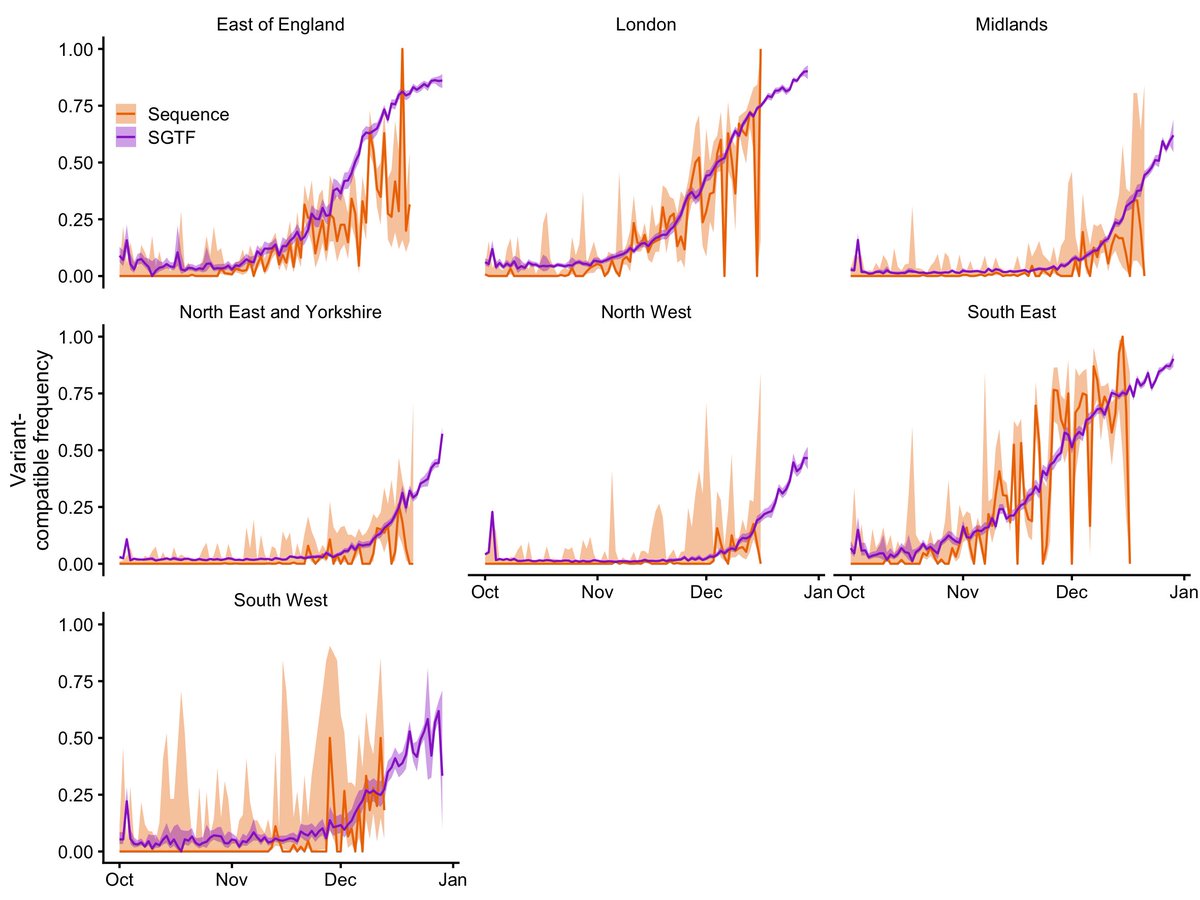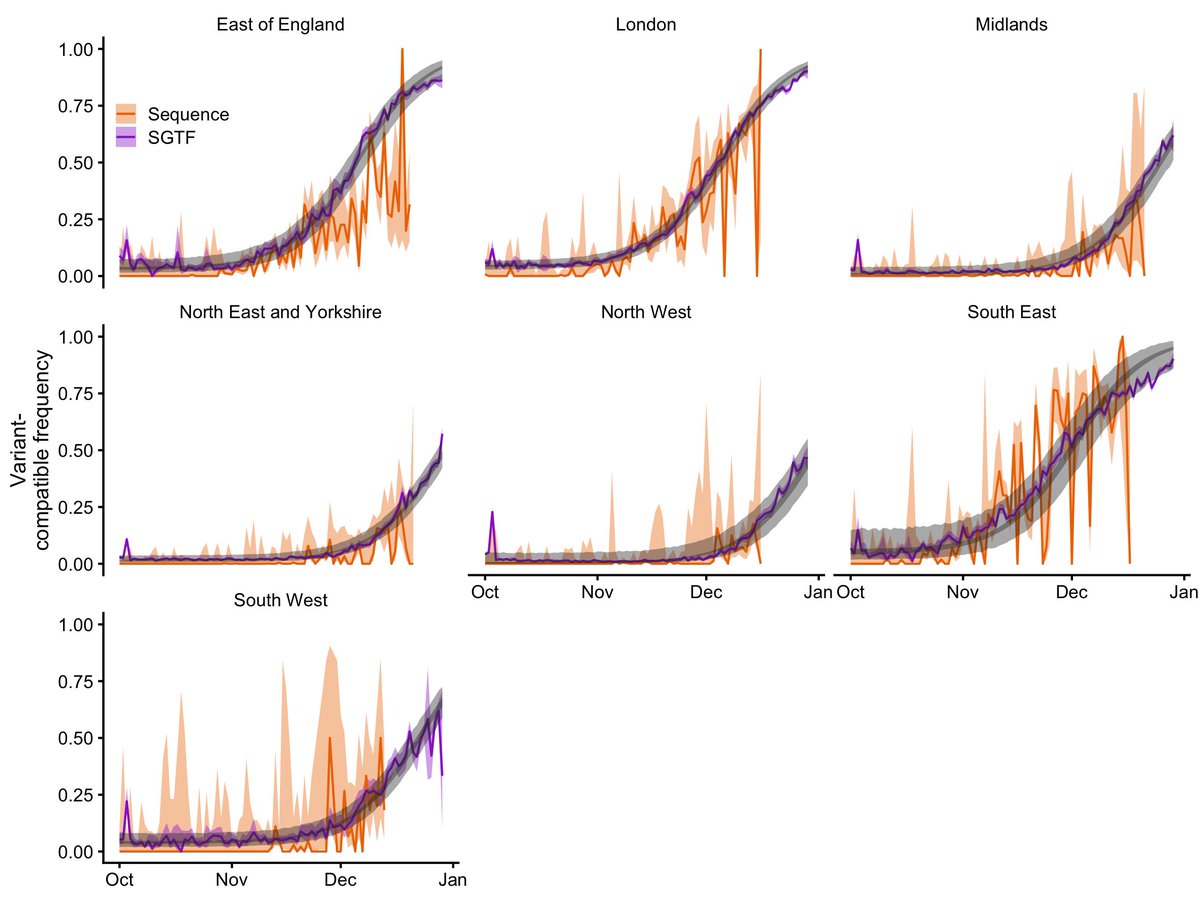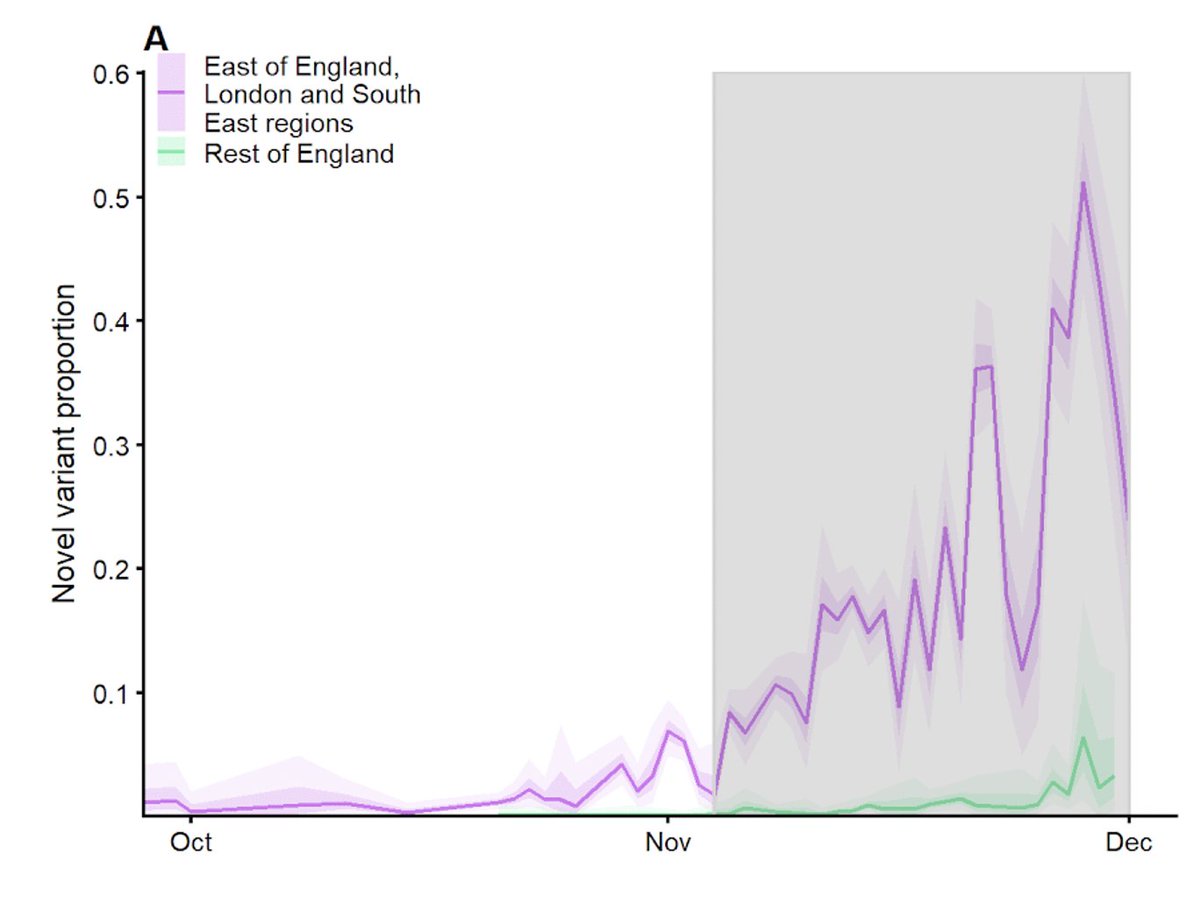
I can present a brief update to our analyses of VOC 202012/01 from last week. VOC 202012/01 continues to spread in England, as shown in both sequencing data from COG-UK and Pillar 2 testing data provided by Public Health England. NOT PEER REVIEWED 1/7 

While the sequencing data above are definitively VOC 202012/01, S-gene target failure (SGTF) is also associated with some other lineages. However, PHE estimates some 98% of SGTF are now VOC 202012/01 (assets.publishing.service.gov.uk/government/upl…). NOT PEER REVIEWED 2/7
Fitting a purely statistical model (logistic growth with a false positive rate representing non-VOC SGTF), we find that the spread of SGTF is consistent with a single increased growth rate for VOC 202012/01 across all NHS regions (grey ribbons). NOT PEER REVIEWED 3/7 

We are not translating these into a % increase in transmission right now, because we are still fine-tuning the methodology. However, the growth shown above is consistent with last week's analysis, ie a transmission rate increase of >50%. More on this soon. NOT PEER REVIEWED 4/7
Looking at the spatial pattern of SGTF across upper-tier local authorities in England (here north at top and south at bottom), two distinct phases are seen, an initial growth in the south-east followed by spread to the rest of England. NOT PEER REVIEWED 5/7 

A brief report on the methods is available here: cmmid.github.io/topics/covid19… Thanks to all coauthors, and to @CovidGenomicsUK and @PHE_uk for data. NOT PEER REVIEWED 6/7
A note on the "NOT PEER REVIEWED": this paper is now under peer review. 7/7
See original thread here:
See original thread here:
https://twitter.com/_nickdavies/status/1341845176361349123
• • •
Missing some Tweet in this thread? You can try to
force a refresh







